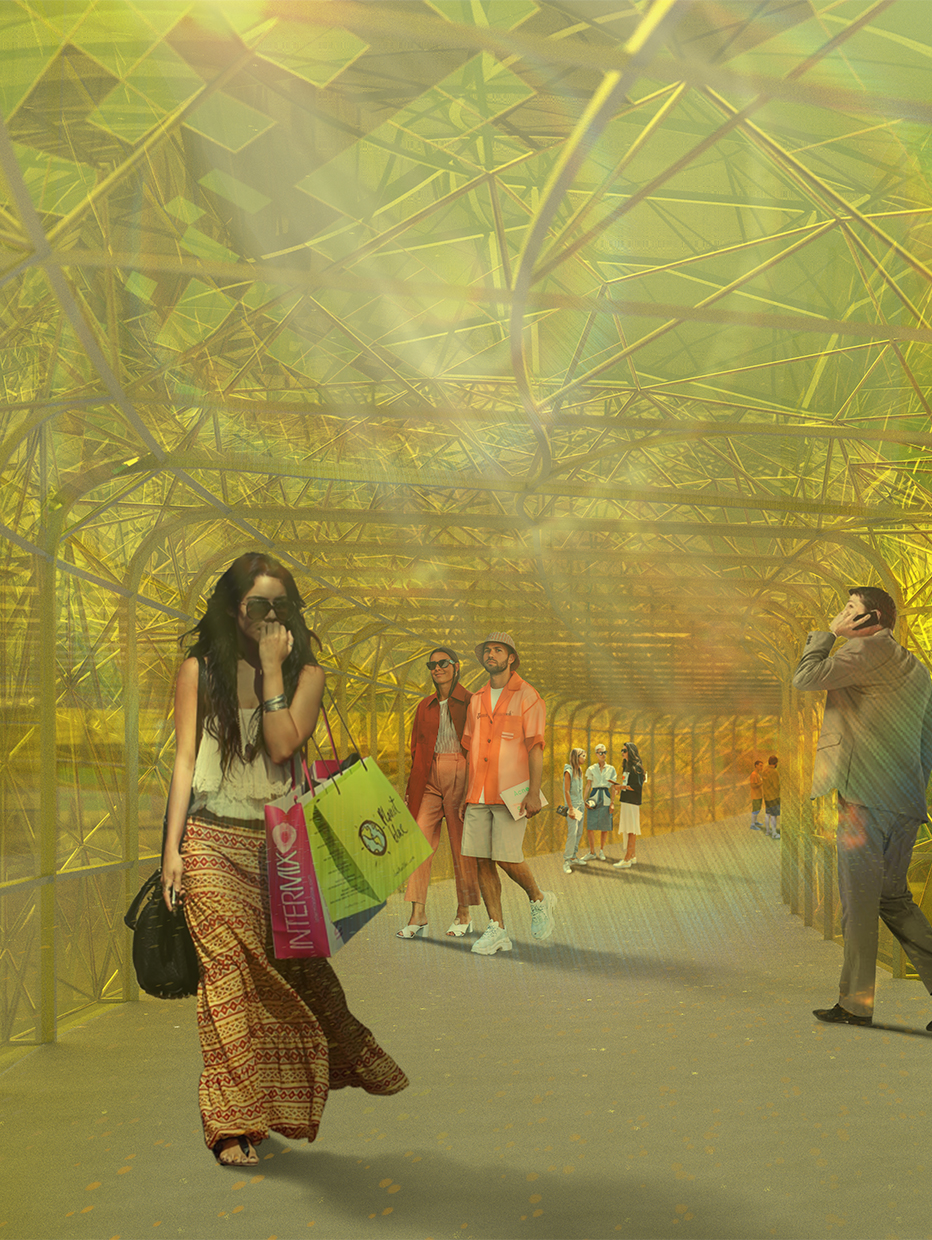Colorful Glasses

Category
Daylight in buildings - Region 4: Asia and Oceania
Students
Minghao Wang
School
Beijing Forestry University
Country
China
Download
Download ↓
With the development of era, people’s pace of life is getting faster and faster. Although people have much more money than before, people’s mood is becoming worse and worse. As the CBD of Beijing, the International Trade Center is a microcosm of the huge city. Office workers gathered here during the day, and night will be sparsely populated in this region. Because of working pressure and fast rhythm of life, people walking on the road are always too busy to reach the destination so that they often bring negative moods. While people know that their mood is a major factor in their productivity, physical and mental health, they don’t have enough time to adjust. Therefore, I want to design a mood adjustment device for the core financial district similar to the International Trade center. Due to the huge workload during the day, it is impossible for people to stop, meditate and calm down. However, color psychology is a good bridge to connect buildings and people’s mood, because vision is more straightforward than smell and hearing. So, I wanted to help people adjust their mood more quickly by changing the color of their surroundings altogether.
Because electrochromic glass is one of the few building materials that can realize real time color change, the colored glass is a steel frame structure with electrochromic glass as the main body. Currently, the range of color adjustment of electrochromic glass is very limited, but Rice University has shown that electrochromic glass can be changed by varying the voltage intensity plus or minus to make the electrochromic glass transform from one color to transparent to another color mode. So I hypothesized that electrochromic glass can present two colors that are very similar to the contrasting colors. Inspired by the luminous principle of LED lights, I chose three layers of 15mm electrochromic glass as the interior surface of the building, which can display the colors from red to green, orange to blue and yellow to purple, respectively, to meet the requirements of most colors of the device. Certainly, choosing 3 toughened glass is not only to present colorific reason but also to consider pair of sound insulation and the air interlayer between 3 toughened glass and surroundings environment cuts off the noise of surroundings environment in great quantities and makes the factor that can affect person mood becomes relatively oneness. As for the outer skin, PV glass is irregularly distributed across each glass plate, providing electrochromic glass during the day and a certain amount of illumination at night. Of course, the electricity collected by PV glass can also provide enough power for optical and thermal sensors to change the color of electrochromic glass through the intensity and temperature of sunlight. In addition, the initial color of electrochromic glass is determined according to its position. I divide the location of entrance into two categories: 1. Traffic entrance and office area. 2. Dining and leisure area. The colors of the entrance and exit of the two areas are different. For example, from the office area to the dining area, the color changes gradually from warm to cold. Being in a bad mood after work is bad for eating and having fun. On the contrary, alteration from warm color to cool color can make office workers who are about to enter the office calm down, thereby improving the concentration and productivity of employees. The proportion of space between the two passages is determined by a movable glass partition in the middle which increase space on one side and reduce space on the other by comparing the number of people passing through.
Therefore, how people communicate in the environment under the influence of electrochromic glass has become the focus of my research.

































